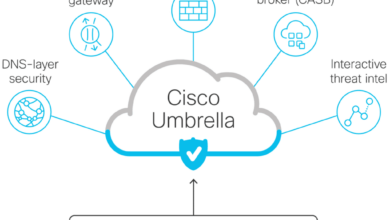
Hackers Launch Cyberattacks For the Challenge
Hackers launch cyberattacks only for the challenge, a seemingly paradoxical yet increasingly prevalent phenomenon. These digital daredevils are driven by a complex interplay of motivations, ranging from ego boosts and the thrill of technical mastery to a desire for recognition within the hacking community. From simple denial-of-service attacks to sophisticated social engineering schemes, the methods employed reflect the sheer diversity of challenges hackers seek to overcome.
Understanding these motivations is crucial to mitigating the risks they pose.
The motivations behind these attacks often center around personal gratification, a thirst for proving their technical prowess, or simply the desire for a sense of accomplishment. These hackers often view cyberattacks as intellectual puzzles, challenges to be solved, and their actions frequently transcend simple mischief. While seemingly harmless in isolation, the potential for unintended consequences and escalating impacts necessitates careful consideration and a proactive approach to security.
Motivations for the Challenge
Hacking for the sake of the challenge, a phenomenon often misunderstood, is a complex tapestry woven from various motivations. Beyond the sensationalized narratives of malicious intent, a significant subset of hackers engage in cyberattacks driven purely by the pursuit of solving complex technical puzzles and testing their skills. Understanding these motivations is crucial for comprehending the motivations behind these activities.These individuals are often highly skilled in programming and cybersecurity, driven by a thirst for knowledge and a desire to push the boundaries of their abilities.
The thrill of discovery and the satisfaction of overcoming obstacles are often cited as primary motivators. This article will delve into the specific motivations behind this type of hacking, including the various types of challenges that inspire such actions and the role of personal satisfaction in the process.
Motivations Driving Hacking Challenges
The desire for personal recognition and validation, often referred to as an “ego boost,” plays a significant role. Winning competitions or demonstrating exceptional skills in a controlled environment can provide hackers with a profound sense of accomplishment. This drive can be particularly potent for those who derive satisfaction from showcasing their technical prowess.Another significant driver is the pursuit of technical proficiency.
Hacking challenges offer a controlled environment for testing and improving hacking skills. Finding vulnerabilities in systems, often in a controlled environment, is a way to refine their skills and gain insights into potential weaknesses in real-world systems. This can range from simple penetration testing to exploring complex security protocols.
Types of Challenges Inspiring Cyberattacks
A diverse range of challenges can inspire hackers to engage in cyberattacks for the sake of the challenge. These challenges can span technical puzzles to social engineering tests. Technical challenges might involve reverse engineering software, exploiting vulnerabilities in web applications, or cracking encrypted data.Social engineering challenges can focus on tricking individuals into revealing sensitive information or gaining unauthorized access to systems.
These challenges often require creativity and adaptability. Understanding the human element of security is just as important as technical proficiency. The key to the success of these challenges is not just the complexity of the technical aspects, but also the creative and innovative solutions that participants devise.
Personal Satisfaction and Recognition
The satisfaction derived from successfully completing a hacking challenge is a powerful motivator. The sense of accomplishment, the intellectual stimulation, and the recognition received from peers and communities can significantly influence the behavior of hackers. The personal satisfaction gained from successfully overcoming a challenge, often in a competitive setting, can drive hackers to continually push their limits. This is often reinforced by the recognition and validation from the community.
Comparison of Motivations
| Motivation | Description | Example | Impact |
|---|---|---|---|
| Ego boost | Desire for recognition and validation. | Achieving a high score on a hacking competition. | Can be a driver for harmful activities if not channeled appropriately. |
| Technical Proficiency | Testing and improving hacking skills. | Finding vulnerabilities in a system for personal improvement. | Can lead to unintentional harm if not conducted responsibly and ethically. |
| Intellectual Stimulation | Desire to solve complex puzzles and learn new techniques. | Reverse engineering a piece of software to understand its inner workings. | Can lead to innovation and advancement in cybersecurity. |
Types of Cyberattacks Driven by Challenge
Cyberattacks are often driven by a complex interplay of motives, ranging from financial gain to malicious intent. However, a significant, albeit less prevalent, category of attacks stems from the pure challenge of demonstrating technical prowess or overcoming security defenses. These attacks, often lacking a concrete financial or political goal, are purely about pushing boundaries and proving skills. Understanding these types of attacks is crucial for enhancing security measures and recognizing the motivations behind digital threats.
Common Types of Challenge-Driven Attacks
Challenge-driven attacks are diverse, yet share a common thread: the desire to prove technical abilities. These attacks can take many forms, often mirroring more malicious types of attacks but without the same level of premeditation or planning. Understanding these forms of attack allows security professionals to better recognize potential threats and adjust defenses accordingly.
Denial-of-Service (DoS) Attacks
DoS attacks aim to overwhelm a target system with an excessive amount of traffic, effectively preventing legitimate users from accessing the service. This type of attack is often driven by a desire to test the limits of a system’s resilience, or to demonstrate the ability to disrupt a service. The methodology often involves automated tools and techniques designed to generate a large volume of requests, exceeding the system’s capacity to respond.
A common example is simply attempting to flood a small website with traffic, exceeding its capacity to handle requests.
Phishing Attacks
Phishing attacks, while often driven by financial gain or identity theft, can also be used for the challenge of demonstrating social engineering prowess. These attacks attempt to trick individuals into revealing sensitive information, such as passwords or credit card details. The methodology behind a challenge-driven phishing attack might involve crafting a sophisticated phishing email or creating a realistic-looking fake website, solely to test the susceptibility of individuals.
An example of this would be sending a large number of phishing emails to see how many individuals respond and click on malicious links.
SQL Injection Attacks
SQL injection attacks exploit vulnerabilities in applications that interact with databases. The challenge-driven attacker might attempt to gain unauthorized access to a database by manipulating the input fields to execute malicious SQL queries. The methodology involves injecting specific code into input fields to manipulate database queries, often for the purpose of gaining unauthorized access.
Brute-Force Attacks
Brute-force attacks involve systematically trying various combinations of usernames and passwords to gain unauthorized access. The challenge-driven attacker might attempt to overcome a system’s security by trying every possible combination, testing the system’s resilience against password guessing attacks. The methodology often involves automated tools to test a wide range of potential passwords, often leveraging a dictionary of common passwords.
Table of Characteristics of Different Attack Types
| Attack Type | Description | Motive | Example |
|---|---|---|---|
| Denial-of-service (DoS) | Flooding a target system with traffic to overload it. | Challenge to see if they can bring down the system. | Attacking a small website for fun. |
| Phishing | Tricking individuals into revealing sensitive information. | Challenge to see if they can fool people. | Sending phishing emails to see how many people fall for it. |
| SQL Injection | Exploiting vulnerabilities in applications that interact with databases. | Challenge to gain unauthorized access. | Injecting malicious code into an input field to access a database. |
| Brute-Force | Systematically trying various combinations of usernames and passwords. | Challenge to overcome security. | Trying every possible password combination to access an account. |
The Impact and Consequences
The allure of hacking, particularly for those driven by the challenge, often obscures the potential for real-world consequences. While the motivation might seem purely academic or competitive, the actions of a hacker, even if unintentional, can have profound and lasting negative impacts. The very act of exploring vulnerabilities can lead to unforeseen circumstances, making understanding the potential ramifications crucial.The pursuit of challenging exploits, while seemingly benign, can unlock vulnerabilities that extend far beyond the target system.
This inherent interconnectedness of digital systems means an attack, even one initiated for the sake of a challenge, can ripple through various layers, affecting individuals and organizations in unforeseen ways. The potential for unintended harm underscores the importance of responsible digital exploration.
Negative Impacts of Challenge-Driven Attacks
Understanding the potential negative impacts of these attacks is paramount to comprehending the gravity of the situation. Even attacks intended solely for the challenge can have far-reaching consequences. The focus on exploiting vulnerabilities can escalate quickly, transforming a simple test into a full-blown security breach.
Real-World Consequences
The digital world is intricately interwoven with the physical world. A seemingly isolated cyberattack can have significant real-world consequences. Disruptions to critical infrastructure, financial losses, and reputational damage are all potential outcomes, even if the attacker’s intent was solely to demonstrate technical prowess.
Unintended Harm and Damage
The very nature of exploring vulnerabilities involves an inherent risk of causing unintended harm. Even a well-intentioned attempt to demonstrate a vulnerability can accidentally compromise data, disrupt services, or cause financial loss to innocent third parties. The domino effect of cascading failures can be severe.
Escalation of Attacks Motivated by Challenge
The initial motivation might be a simple challenge, but the ability to exploit vulnerabilities can quickly escalate. Initial access to a system can provide the foundation for further attacks, allowing the hacker to expand their reach and impact. The potential for escalation underscores the need for robust security measures.
Table of Increasing Impact Scenarios
| Scenario | Description | Impact |
|---|---|---|
| Simple attack | A minor vulnerability is exploited for a challenge, affecting only the targeted system. | Minimal damage; potentially a temporary disruption to service. |
| Escalating attack | An attack is expanded to other systems or users, compromising additional data and services. | Increased damage; potential for data breaches, service disruptions, and financial losses. |
| Accidental harm | An attack inadvertently causes harm or damage to a third party, potentially leading to legal repercussions and reputational damage. | Significant damage; legal liabilities, financial losses, and reputational harm for the target organization and potentially individuals. |
The Social and Ethical Implications: Hackers Launch Cyberattacks Only For The Challenge

The allure of the unknown, the thrill of the challenge, and the potential for personal validation often drive individuals to engage in cyberattacks. However, the social and ethical implications of such actions are profound and far-reaching. This exploration delves into the responsibilities of those participating in these activities, contrasting them with ethical hacking practices, and highlighting the potential societal risks.Understanding the motivations behind such activities is crucial to comprehending the ethical dilemmas involved.
The act of engaging in cyberattacks purely for the challenge can have a devastating impact on individuals, organizations, and even entire communities, regardless of the attacker’s intentions.
Ethical Considerations in Hacking Challenges
Hacking challenges, while seemingly harmless, often blur the lines between exploration and malicious intent. The line between harmless exploration and harmful exploitation can be extremely thin, especially in the context of real-world systems. This ambiguity necessitates a careful evaluation of the ethical implications involved.
Responsibility of Individuals Engaging in Challenges
Individuals participating in hacking challenges, even those ostensibly “safe” or “controlled,” bear a significant responsibility for their actions. This responsibility extends beyond the immediate act of hacking and encompasses understanding the potential consequences, both intended and unintended, of their actions. Furthermore, the potential for damage or misuse of skills acquired through such challenges must be considered.
Comparison with Ethical Hacking Practices
Ethical hacking, a crucial practice in cybersecurity, differs fundamentally from hacking challenges driven solely by the thrill of the challenge. Ethical hackers operate with explicit permission from the target system owner, adhering to strict ethical guidelines and reporting any vulnerabilities discovered. In contrast, those engaging in hacking challenges for the challenge alone often operate without authorization, potentially causing harm without any intention of rectifying the issue.
It’s a fascinating, albeit unsettling, aspect of the hacking world that some cyberattacks are launched purely for the challenge. This isn’t about financial gain or malicious intent, but rather a desire to test skills and push boundaries. This is where the Department of Justice Offers Safe Harbor for MA Transactions here comes in, highlighting the importance of robust security measures in protecting against such actions.
Ultimately, the motivations behind these attacks, regardless of the outcome, highlight the need for continuous improvement in cybersecurity defenses.
This difference in approach underscores the importance of clear ethical boundaries.
Potential Societal Risks and Vulnerabilities
The pursuit of hacking challenges, even if undertaken in controlled environments, can contribute to the growth of a pool of individuals with the skills and knowledge to exploit real-world systems. This poses a significant risk to individuals and organizations. The knowledge gained can easily be transferred to more malicious activities. The lack of accountability for these activities further fuels the potential for misuse.
For example, a successful penetration test in a controlled environment could equip an attacker with knowledge and techniques to compromise similar systems outside of that environment.
Hackers sometimes launch cyberattacks purely for the thrill of the challenge, pushing boundaries and testing systems. This often manifests in targeting vulnerabilities like those recently discovered in Azure Cosmos DB. Understanding these vulnerabilities, detailed in Azure Cosmos DB Vulnerability Details , is crucial for strengthening defenses and preventing such attacks. Ultimately, the motivation behind these attacks, whether for personal gain or simply the challenge, highlights the constant need for proactive cybersecurity measures.
Importance of Ethical Considerations in Hacking Challenges, Hackers launch cyberattacks only for the challenge
Ethical considerations are paramount in any context involving hacking. A clear understanding of the potential harm that can result from actions undertaken for the sole purpose of a challenge is critical. Ethical frameworks must guide individuals and organizations in navigating the complexities of cyber space, ensuring responsible use of skills and knowledge. This involves emphasizing the importance of authorization, transparency, and accountability in any form of hacking activity.
Strategies for Mitigating Risks
Protecting against cyberattacks driven by the challenge of hacking requires a multi-faceted approach. This involves not just technical defenses, but also a proactive culture of security awareness and a deep understanding of potential attack vectors. Implementing robust security protocols and educating users about potential threats are critical components of a comprehensive mitigation strategy.
Preventative Measures and Security Protocols
Robust preventative measures are crucial in reducing the vulnerability of systems to attacks driven by the challenge. These measures should be proactive, encompassing a wide range of security protocols and technologies. Implementing strong access controls, including multi-factor authentication (MFA), is essential. Regular software updates and patches are vital to address known vulnerabilities. Network segmentation isolates critical systems, minimizing the impact of a breach.
Regular security assessments and penetration testing help identify and address weaknesses before they are exploited. Firewalls and intrusion detection systems are crucial for monitoring and blocking malicious traffic. Data encryption protects sensitive information, even if systems are compromised.
Security Awareness and Education Campaigns
Effective security awareness campaigns play a vital role in mitigating risks. Educating users about common attack vectors, phishing techniques, and social engineering tactics is critical. Regular training sessions and simulated phishing exercises can strengthen employees’ defenses against such attacks. Clear policies regarding acceptable use of technology, password management, and data handling are crucial. These campaigns should be tailored to the specific needs and roles within an organization.
Implementing Security Measures
A detailed approach to security measures involves implementing specific protocols and technologies. Enforcing strong password policies, including complexity requirements and regular password changes, helps to prevent unauthorized access. Implementing multi-factor authentication (MFA) adds an extra layer of security, requiring more than one form of verification to access accounts. Regular software updates and patching address known vulnerabilities, significantly reducing the attack surface.
Hackers sometimes launch cyberattacks purely for the thrill of the challenge, pushing the boundaries of what’s possible. This highlights the critical need for robust security measures, like deploying AI Code Safety Goggles Needed Deploying AI Code Safety Goggles Needed to proactively identify and fix vulnerabilities before they can be exploited. Ultimately, these attacks demonstrate the ongoing need for vigilance in the digital world.
Network segmentation isolates critical systems, limiting the impact of a potential breach. Data encryption protects sensitive information, safeguarding it even if systems are compromised. Employing intrusion detection and prevention systems (IDPS) monitors network traffic for suspicious activity and blocks malicious traffic. These measures significantly reduce the likelihood of successful attacks driven by the challenge.
Step-by-Step Protection Process
A flowchart outlining a step-by-step process for protection against such attacks is essential. The process begins with conducting a thorough security risk assessment to identify potential vulnerabilities. This is followed by implementing appropriate security controls, including access controls, software updates, and network segmentation. Regular security audits and penetration testing are crucial to identify and address any weaknesses.
Security awareness training programs for employees should be implemented and regularly reviewed. This comprehensive approach strengthens the organization’s overall security posture and reduces the likelihood of successful attacks.
| Step | Action |
|---|---|
| 1 | Conduct a comprehensive security risk assessment. |
| 2 | Implement appropriate security controls (e.g., access controls, software updates, network segmentation). |
| 3 | Conduct regular security audits and penetration testing. |
| 4 | Implement security awareness training programs for employees. |
| 5 | Monitor and review security measures regularly. |
Closing Notes

In conclusion, hackers launching cyberattacks purely for the challenge is a complex issue with significant implications. The motivations behind these actions, the diverse types of attacks employed, and the potential for unintended harm highlight the critical need for robust security measures and a heightened awareness of the risks. While the pursuit of knowledge and skill development is commendable, the ethical considerations and potential for real-world damage necessitate a responsible approach to hacking activities.
Essential Questionnaire
What are some examples of “simple” attacks motivated by the challenge?
Simple attacks might include exploiting minor vulnerabilities in a system for a quick test, or launching a low-bandwidth denial-of-service attack against a small, personal website just to see if it can be brought down. The key element is that the attack is limited in scope and doesn’t have significant real-world impact beyond the immediate test.
How does the desire for recognition influence these attacks?
The desire for recognition and validation plays a significant role. High scores in hacking competitions or successfully penetrating secure systems can fuel the motivation to perform attacks. The satisfaction of proving one’s skills can be a powerful driver, sometimes outweighing other considerations.
Can these attacks escalate to more serious threats?
Yes, attacks initially motivated by the challenge can escalate significantly. A hacker might expand their attack to other systems or users, potentially causing much wider damage. There’s also the risk of unintended harm, where an attack meant for one target unexpectedly impacts a third party.
What are the differences between hackers driven by challenge and those driven by financial gain?
Hackers driven by challenge are often more focused on the technical aspects of the attack and the personal satisfaction of overcoming a challenge. Those driven by financial gain or malicious intent, however, are primarily motivated by external rewards or harmful purposes, such as stealing data or disrupting services.





